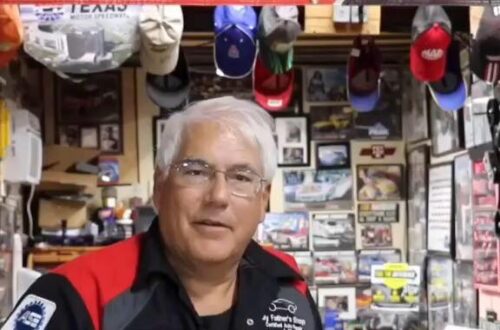Industry Observations From Erica Eversman

Sunday, 26 January 2014 17:57
Featured in AUTOBODYNEWS
If you’ve been paying the least bit of attention to legal issues in the collision repair industry over the past decade, you probably know of Erica Eversman. She’s an OH attorney and consumer advocate specializing in understanding collision repairers’ issues and their impact on consumer safety. A noted authority and frequent speaker on the topics of diminished value, DRP networks and the influence insurers attempt to exert over repairers, Eversman serves as a consultant to the industry, assisting repairers to analyze proposed regulations and laws affecting the industry. In addition to writing “AutoMuse”, an award-winning blog, she is chief counsel for Vehicle Information Services, Inc. and the founder of the Automotive Education and Policy Institute, a non-profit organization geared towards educating consumers.
Though Eversman is obviously very busy playing so many roles, she graciously took time from her hectic schedule for a chat about some of the major concerns plaguing the collision repair industry today.
As a consumer advocate, Eversman stresses that consumer education is vital; “first and foremost, consumers are the people in charge of their vehicles, but if they don’t have the proper information, they can’t stand up for themselves. They are the only ones who can effect meaningful change because it is their vehicles and their contract with the insurance company.”
Furthermore, collision repairers must comply with consumer protection laws, so they are the ones at risk of noncompliance when insurer interference promotes a situation where repairers are asked to do as the insurer requests, which is always focused on cost and saving money rather than on providing a quality repair. The shop can only do so much, and if the consumer doesn’t help, they are essentially saying that the repair is good enough, even if it’s not actually safe.
According to Eversman, consumers possess the power in relation to shops and insurers, so they must demand what they are entitled to or the insurance companies will steer them to low-cost shops that may not be performing quality repairs. These concerns should be highlighted because “if consumers had any idea that they’re driving potentially dangerous vehicles due to insurer interference, they would be appalled, but they have no clue what’s going on.”
Actually, insurers have no role in the repair process whatsoever; they are only supposed to sign the check paying for the repairs, but they’ve become involved because the closer their involvement, the more control they can exert, allowing them to avoid dispersing full payment on repairs. Rather than arguing labor rates and shortchanging repairers, Eversman believes insurers should “take a step back, consider what they are asking shops to do, and reevaluate whether their requests are fair.”
When insurers refuse to compensate for the full repair cost, shops are forced to pursue shortpay cases, but Eversman admits, “litigation is not pleasant. You may get what you’re entitled to at the end of the day, but you have to trudge through mud to get there.”
Recently, there has been a significant rise in the number of shortpay lawsuits being pursued in the courts, but this is not a novel or recent experience. Eversman believes that “collision repairers have had enough interference in their businesses from a third party entity who doesn’t perform repairs or accept liability. They are tired of being shortchanged on payments, so they are turning to the courts for attention, but no one is excited to go to court.”
There are benefits to this recent influx, though. Not only do these lawsuits send a message to the insurance industry, they also serve to create awareness of these issues amongst repairers, attorneys and consumers nationwide, raising public scrutiny and helping to alter insurers’ behavior. Additionally, it “sheds light on how much you can trust insurance company ads that promise to take care of you but don’t explain how they intend to do so,” Eversman explains.
Eversman hopes these shortpay cases will cause insurance companies to reevaluate their attitudes. Though collision repairers can’t control insurer’s behavior, this type of litigation provides them with an opportunity to be fairly compensated for their work which, in turn, allows them to acquire the training necessary to branch out to other vehicles.
Still, this concern is detrimental to consumers, and it should be resolved by the Departments of Insurance who insist this only involves collision repair shops and insurance companies due to their failure to understand that most of these shops that are being shortchanged are non-DRP facilities that have no contracts with or obligations to the insurance companies. Eversman is “appalled it has come to this because the Departments of Insurance are not doing their job which is to protect the consumers since insurance companies are not properly and fairly paying these claims.”
Another example of insurer interference in the collision repair industry is seen in State Farm’s mandate for shops on their Select program to use PartsTrader. Eversman insists, “anything which is imposed on collision repairers from an outside entity is inherently a bad thing. There are other parts procurement systems that shops use, but it is their decision. I find the mandate to use PartsTrader troubling, and I’m also troubled by the application as recent disclosures have indicated estimates coming back with alterations to labor rates which have nothing to do with parts! This is not what PartsTrader was intended to do, as represented by State Farm and PartsTrader.”
The state of OH specifically has a state statute prohibiting repairers from installing salvage parts on a vehicle unless those parts were removed by an Ohio licensed salvage dealer. Eversman fears that the mandate requiring the use of parts procurement systems, especially PartsTrader, will lead repairers to violate these types of statues, creating a very dangerous situation which could potentially lead to consumer protection related lawsuits.
Eversman feels that these issues could be rectified easily; “State Farm should withdraw their mandate requiring the use of PartsTrader. Then, PartsTrader would be like other parts procurement systems, and it would have to compete on its own merits, allowing repairers to have more power in choosing parts, ensuring those parts come from a legitimate source, and adhering to the law.”
Eversman sees the PARTS Act as “an absolute example of the extremes to which any industry will go to get what it wants without consideration for other industries. The patent laws focus on rewarding companies that spend money and produce or design something unique, protecting them for a designated period of time. Aftermarket parts manufacturers and insurers are trying to obtain an exemption for imitation crash parts from the application of the patent laws, but if Congress really wants to do something good for the consumers, they should focus on evaluating patents on medication; that would be far more beneficial than exempting imitation parts!”
An interesting side of this proposed legislation is the fact that, for decades, the insurance and aftermarket parts industries have claimed that the imitation parts are “purely cosmetic” and have nothing to do with how the vehicle performs in a collision; however, because the parts auto makers seek to protect are cosmetic — the standard for design patent eligibility — imitation crash parts manufacturers are now arguing that their parts do have a meaningful function in the car’s performance.
Eversman believes, “this is a terrible idea! We have patent laws for a reason, and since imitation parts manufacturers haven’t demonstrated a significant need to change this, we may as well do away with patents [if the PARTS Act is passed] since it undermines the entire patent system.”
Though Eversman admits that she has not been very involved with and is not particularly informed on the Right to Repair, she wants collision repairers to be able to make a living doing what they’re good at. On the flip side, she has significant concerns with the increasing technology and sophistication of vehicles, as well as the use of alternate metals and composite parts, and she believes the industry is rapidly approaching a point where not everyone has the necessary skills and equipment to safely repair all vehicles.
Because Eversman also wants consumers’ vehicles to be repaired safely, she can see the value of restricting this information to those who have received the proper training, yet since she also sees value in permitting any repairer access to this information in order to repair all vehicles, her opinion is torn between these two conflicting interests.
Additionally, there are many other challenges facing the collision repair industry. For starters, the industry is in a continuous state of flux, partially because of the changing nature of the vehicles themselves and also due to the significant presence of consolidators and multi-shop operations (MSOs). Many MSOs are actively buying other shops, leaving independent shops feeling that they can’t compete and providing an escape route for shop owners who are exasperated with the current state of the industry.
Of course, the impoverished state of the economy comes with its own set of problems which also negatively impact repairers. Finally, the fact that people are driving less and winters have been milder in recent years leading to fewer accidents also affects some shops’ business. Overall, Eversman believes there is “a confluence of things impacting repairers that they don’t have much control over.”
Fortunately, there are some preemptive measures that shops can take to protect themselves from some of these problems.
Stay tuned to Autobody News for a future series on key documentation that every shop should consider utilizing.


